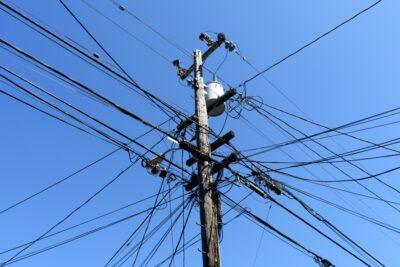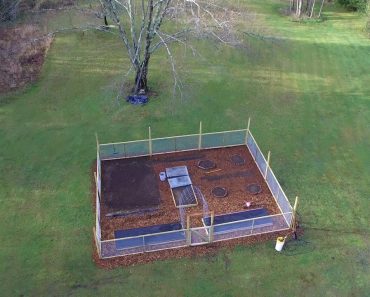
The United States power grid, one of the world’s most intricate and expansive energy systems, is vital for maintaining the country’s social, economic, and industrial health. Yet, it faces an increasing array of vulnerabilities that leave it susceptible to disruptions that could impact everything from day-to-day lives to national security. This article delves into the complexities of the U.S. power grid’s vulnerabilities, including its aging infrastructure, cybersecurity threats, extreme weather events, and the challenges of transitioning to renewable energy sources.
Understanding the Structure of the U.S. Power Grid
The U.S. power grid is divided into three major interconnections: the Eastern Interconnection, the Western Interconnection, and the Texas Interconnection. These networks are made up of over 160,000 miles of high-voltage power lines and thousands of power-generating units, supplying electricity to millions of homes and businesses across the country. The grid is organized into three primary functions: generation, transmission, and distribution.
- Generation involves producing electricity from various sources, including coal, natural gas, nuclear, and renewables.
- Transmission refers to the high-voltage transport of electricity from power plants to substations.
- Distribution involves delivering electricity to end consumers through lower-voltage lines.
While this structure has allowed the U.S. to provide reliable electricity to its citizens, it is also highly vulnerable to disruptions due to its size, age, and the need for ongoing, substantial maintenance.
Aging Infrastructure: A Looming Threat
Much of the U.S. power grid was built decades ago, with significant portions dating back to the 1950s and 1960s. This aging infrastructure is not only less efficient but also more prone to failure, especially under increased demand or stress from external threats. As equipment ages, it becomes more susceptible to wear and tear, leading to higher risks of breakdowns and outages. The American Society of Civil Engineers gave the U.S. power infrastructure a “C-” grade in its 2021 report, underscoring the critical need for improvements.
Replacing outdated equipment and upgrading technology to modern standards is a monumental task. According to a 2020 report by the Electric Power Research Institute, the U.S. power sector needs an estimated $1.5 to $2 trillion investment over the next two decades to bring the grid up to a more resilient and sustainable standard. However, this high cost, combined with limited public funding, has slowed the pace of modernization efforts, leaving parts of the grid vulnerable to both physical and cyber threats.
Cybersecurity Threats: An Ever-Present Danger
As the power grid becomes more digitized, cybersecurity threats have emerged as a top concern. Cybercriminals and nation-state actors continually seek ways to infiltrate critical infrastructure to cause disruption or gain strategic advantages. The 2021 ransomware attack on Colonial Pipeline, while not directly related to the power grid, highlighted the vulnerabilities of energy infrastructure to cyber-attacks. Such incidents have underscored the potential consequences of an attack on the power grid, which could lead to widespread blackouts and economic disruption.
There are several ways in which cyberattacks can target the power grid:
1. Direct Attacks on SCADA Systems: Supervisory Control and Data Acquisition (SCADA) systems control and monitor the grid’s infrastructure. Cybercriminals targeting these systems could disrupt operations or cause physical damage.
2 .Supply Chain Vulnerabilities: Hardware and software used within the power grid may contain vulnerabilities that adversaries can exploit. Compromised software updates or malware embedded in equipment can introduce risks throughout the power grid’s ecosystem.
3. Ransomware Attacks: Ransomware could target utility companies, demanding large sums of money to restore access to systems. A successful ransomware attack could disrupt service delivery to millions of people.
Efforts to enhance grid cybersecurity have increased, with federal agencies like the Department of Energy and the Cybersecurity and Infrastructure Security Agency (CISA) leading initiatives to protect critical infrastructure. However, staying ahead of sophisticated attackers is a constant challenge, and vulnerabilities remain a persistent issue.
Extreme Weather Events: An Escalating Risk Factor
Climate change has led to an increase in the frequency and severity of extreme weather events, such as hurricanes, wildfires, and heatwaves. These natural disasters pose a significant threat to the U.S. power grid, as they can directly damage infrastructure, disrupt fuel supply chains, and overwhelm demand during peak periods
In recent years, severe weather events have exposed these vulnerabilities in stark terms:
- Hurricanes: Hurricanes regularly cause significant damage to the grid in coastal regions. Hurricane Ida in 2021 knocked out power for over one million people in Louisiana and Mississippi, with some areas remaining without power for weeks.
- Wildfires: In states like California, wildfires have forced utilities to shut down power lines to prevent fires from spreading. In 2019, Pacific Gas & Electric (PG&E) was forced to implement widespread power shut-offs, impacting millions of Californians.
- Heatwaves: Heatwaves place extreme demand on the power grid, especially in areas with high air conditioning usage. Texas, for example, faced power grid strain during the 2021 winter storm, highlighting the challenges of maintaining grid stability during extreme weather.
Utilities are investing in technologies and infrastructure that make the grid more resilient to these events, such as burying power lines underground, hardening equipment, and implementing advanced grid management systems. Yet, these measures are costly and take years to implement, and the power grid remains highly vulnerable to increasingly unpredictable weather patterns.
Challenges in Transitioning to Renewable Energy
The shift towards renewable energy sources is a critical part of reducing carbon emissions and combating climate change, but it also presents unique challenges for the existing power grid. Solar and wind energy, the most widely adopted renewable sources, are intermittent and dependent on weather conditions. Unlike coal or natural gas plants, renewable sources do not provide a consistent energy output, leading to issues with grid stability and reliability.
Integrating renewable energy into the power grid requires advanced technologies like battery storage systems and sophisticated grid management software to smooth out the variability in power production. However, these technologies are still being developed and implemented, and the cost of building the necessary infrastructure to support a renewable-based grid is significant. As the U.S. continues to push for a clean energy transition, the power grid will need to adapt to handle the unique demands of renewable sources, a challenge that requires a significant redesign of grid architecture.
The Role of Policy and Public Investment
Addressing the vulnerabilities of the U.S. power grid requires comprehensive policy action and substantial public investment. Initiatives such as the Bipartisan Infrastructure Law, passed in 2021, allocate billions of dollars to improve the resilience of the power grid, support renewable energy development, and promote grid modernization efforts. Additionally, regulatory agencies like the Federal Energy Regulatory Commission (FERC) are working to establish standards that promote grid resilience and cybersecurity.
While these steps are promising, the scale of investment required to fortify the power grid far exceeds current funding levels. Policymakers must prioritize the grid as a critical component of national infrastructure, making it a focal point of climate and security policies. Enhancing grid resilience is not just an economic priority but a national security imperative, as disruptions to the power supply can have severe consequences for public safety, health, and security.
Conclusion: The Path to a More Resilient Power Grid
The vulnerabilities of the U.S. power grid highlight the need for a comprehensive strategy that addresses aging infrastructure, cybersecurity threats, extreme weather risks, and the transition to renewable energy. Building a more resilient grid is not an overnight solution. Rather, it requires sustained investment, advanced technology, and coordinated policy efforts.
A resilient power grid is essential for the stability and security of our country. By investing in infrastructure upgrades, enhancing cybersecurity, planning for climate resilience, and supporting renewable integration, the U.S. can strengthen its grid against both current and future challenges. The path forward is complex and costly, but ensuring the stability and resilience of the power grid is one of the most crucial steps the country can take to protect its citizens, economy, and national security. At this time however… we are vulnerable on many levels.


























